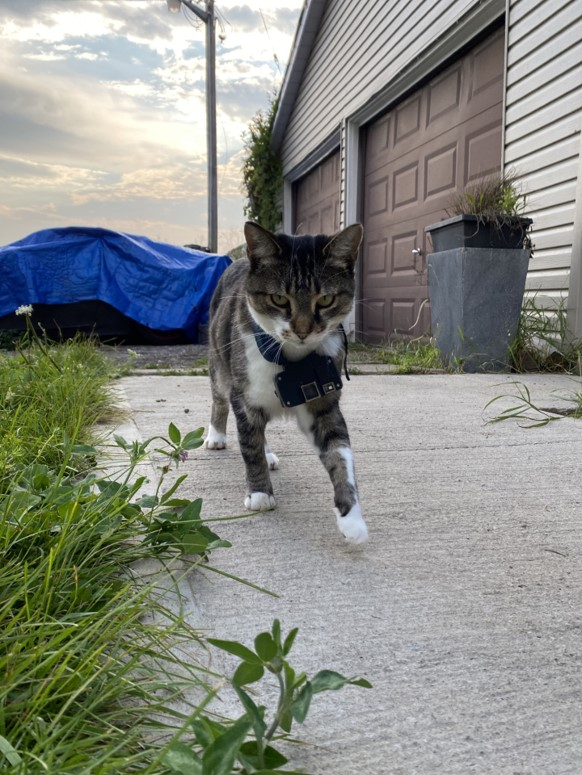It's no secret that birds are facing many threats in our cities, but the leading cause of death may come as a surprise. It's not avian flu or natural predators, but instead, outdoor cats.
Cats are responsible for millions of bird deaths each year, but the actual number of deaths has always been difficult to pin down. Now, a new study from ecologists at the University of Guelph provides a more accurate picture of how many birds are dying at the claws of household pets. The study was recently published in Avian Conservation and Ecology.
"The interest in cats and their impact on the environment continues to grow, especially from people who are focused on wildlife," says lead author Jonathan Chu, a PhD candidate in the Department of Integrative Biology. "Cat owners are starting to question whether they should allow their pets to go outside and are looking at the pros and cons of giving cats outdoor enrichment."
How many birds do cats kill each year?

A cat wearing a catcam collar
A study released in 2013 was the first to look at cat predation rates and estimated cats were killing anywhere from 105 to 348 million birds each year in Canada. A decade later, Chu, U of G ecologist Dr. Ryan Norris and adjunct professor Dr. Elizabeth Gow scoured more recent studies including those using updated methods to provide more accurate data on bird deaths.
Their latest study estimates that the median number of birds killed by cats in Canada each year is 60 million, with 95% confidence intervals between 19 and 197 million, 71% fewer than the 2013 study suggested.
The researchers note this doesn't mean cats are killing fewer birds. Instead, they now have a more accurate picture of how outdoor birds are impacting their community and environment.
"The interest in understanding the impact of owned and unowned cats on wildlife has grown tremendously over the past 10 years, so it was time to collate all of these studies to produce what we think is a better estimate of predation rates," Norris says.

Dr. Ryan Norris
In the past, studies have estimated data through prey-return studies, where owners report on how many dead birds their cats bring home.
"Now, we have studies where cats are wearing cameras while outside, which allows us to see how many birds they're actually killing," Chu says.
Cats don't typically bring home all their prey, so they may kill four or five birds but only return one to their owner. In some of the studies the U of G team reviewed, researchers outfitted cats with cameras around their necks, then reviewed the footage to see how many birds they killed.
"Our estimates are more accurate now because we have a more precise ratio of prey returned versus actually killed," Chu says.
Holistic view of cats in their environment
The study aims to provide a holistic view of how humans, cats and wildlife interact within their environments.
"That includes reducing bird mortality from cats," Chu says. "There needs to be a balance that's sustainable for everyone and something that all of society can get behind."
Chu suggests keeping cats indoors, or finding a middle ground where cats spend time outside on a leash or in enclosed spaces.
"If you do want to let your cat outside, I recommend supervising it to reduce the potential for encounters with wildlife," Chu says.
Armed with better knowledge of how many birds are killed by urban cats each year, Chu says next steps include developing a better understanding of how rural cats impact their environment.













